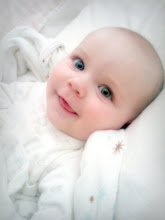At the beginning of the menstrual cycle, the body begins to produce follicle stimulating hormone (FSH). FSH facilitates the formation of a follicle on one of the ovaries. The follicle contains and nurtures the egg. When a follicle has adequately matured, a surge of Luteinizing Hormone (LH) causes the follicle to burst and release the egg into the fallopian tube - the moment of ovulation.
Throughout the menstrual cycle, a small amount of LH is produced - but during the middle of the cycle LH briefly and dramatically increases. Elevated quantities of luteinizing hormone facilitate ovulation - and OPKs detect this LH surge through anti-LH antibodies contained in the sensitive testing membrane of the test.
The LH surge is, alas, very brief - and in order to detect the LH surge, a woman needs to test at the right time of the month - and the right time of day. As LH is produced by the body in the morning, mid-afternoon is considered the ideal time to test.
Once the LH surge has been detected, successful fertilization is most likely to take place one to three days following the LH surge - with peak fertility at 36 hours post-LH surge. Since this ovulation "window" only opens once per month (and the unfertilized egg has a short 24-hour life-span) predicting ovulation accurately is very helpful when trying to become pregnant
So....Throughout the menstrual cycle, a small amount of LH is produced - but during the middle of the cycle LH briefly and dramatically increases. Elevated quantities of luteinizing hormone facilitate ovulation - and OPKs detect this LH surge through anti-LH antibodies contained in the sensitive testing membrane of the test.
The LH surge is, alas, very brief - and in order to detect the LH surge, a woman needs to test at the right time of the month - and the right time of day. As LH is produced by the body in the morning, mid-afternoon is considered the ideal time to test.
Once the LH surge has been detected, successful fertilization is most likely to take place one to three days following the LH surge - with peak fertility at 36 hours post-LH surge. Since this ovulation "window" only opens once per month (and the unfertilized egg has a short 24-hour life-span) predicting ovulation accurately is very helpful when trying to become pregnant
If i detect my LH surge I will call the Dr's office the day I detect it and we go in the next day for the IUI. Before the IUI i get an ultrasound and they look to see how many follicles I have, how big they are (usually, a mature follicle is about 20 millimeters in diameter, or about the size of a small grape, just before it ruptures and releases its egg) and what my lining is measuring at (measuring the thickness of the uterine lining, known medically as the endometrium, relates to determining how receptive it might be to the pending implantation of an embryo). If I do not detect my LH surge by CD12 I will go in for an ultra sound to measure the size of my follicles. If they are big enough (18mm or larger) the Dr.'s office will give me a "trigger" shot. A trigger shot is an injection of the hormone human chorionic gonadotropin (HCG), which actslike LH, can be given to stimulate final egg maturation and follicle rupture, releasing the egg. I should ovulate about 36 hours after the HCG injection, which can be confirmed by further ultrasound scans or an ultrasound for release. 24 to 36 hours after my trigger we go in for the IUI.
So that's it in a nutshell. I don't know about you but my head hurts just thinking about it! Hope this helps!

.jpg)


No comments:
Post a Comment